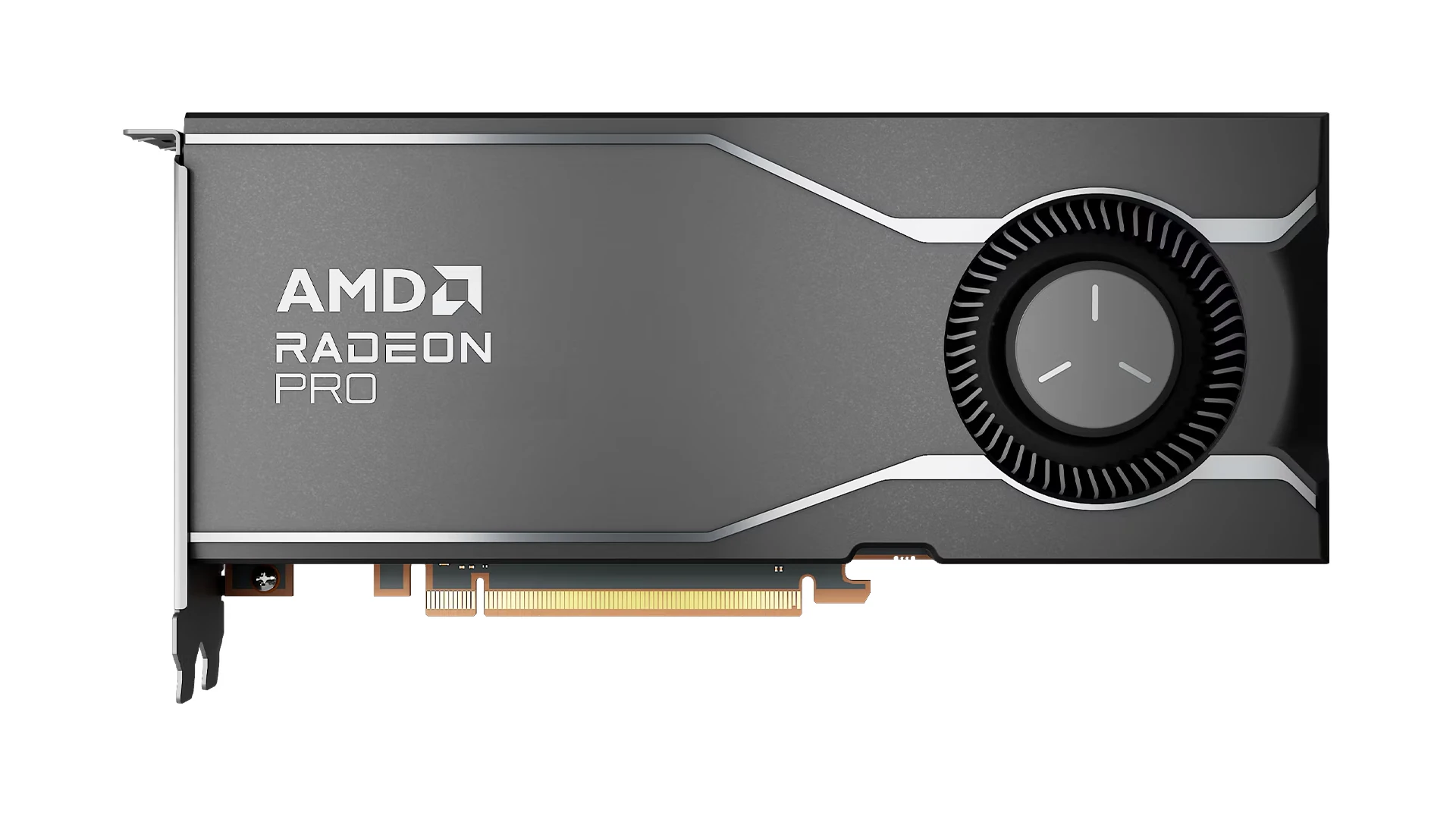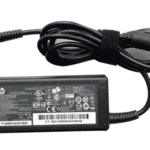AMD is preparing a bold move into high-end workstation graphics with the upcoming Radeon PRO W9000 Series, expected to debut at Computex 2025 or during the company’s “Advancing AI” event in June. Built on the new RDNA 4 architecture, the W9000 lineup signals AMD’s most aggressive attempt yet to take on NVIDIA’s RTX PRO 6000 Blackwell, targeting professionals in video editing, 3D rendering, CAD, AI development, and scientific computing.
This new series is a clear statement: AMD isn’t just playing catch-up—it’s building a GPU stack specifically for the modern era of content creation and AI acceleration.
Radeon PRO W9000 Series – At a Glance
| Feature | Details |
|---|---|
| GPU Architecture | RDNA 4 |
| Core Chip | Navi 48 XTW |
| Compute Units (CUs) | 64 CUs (4,096 Stream Processors) |
| Die Size | 356mm² |
| Memory | 32GB ECC GDDR6 (256-bit bus) |
| Expected Variants | XL, XT, XTX, XTW |
| Target Audience | Professionals in VFX, CAD, AI, engineering simulation, and video work |
| Estimated Launch Window | June 2025 (Computex or AMD event) |
RDNA 4 Brings a Generational Leap in Efficiency
The Radeon PRO W9000 is the first professional GPU series from AMD based on RDNA 4, a next-gen architecture that emphasizes power efficiency, better memory bandwidth utilization, and enhanced compute support. Early leaks suggest up to a 50% performance-per-watt improvement over RDNA 3, making it a strong candidate for workstations where thermal and power budgets matter.
Unlike the gaming-focused Radeon RX 9070 XT (which uses the same Navi 48 GPU), the W9000 series is optimized for FP64 workloads, OpenCL, Vulkan Pro extensions, and ISV certification for professional software like Autodesk Maya, Blender, and DaVinci Resolve.
Memory: 32GB ECC GDDR6 on a 256-bit Bus
The W9000 series opts for 32GB of ECC (Error-Correcting Code) GDDR6, a step down from the 48GB on the Radeon PRO W7900, but this move likely reflects AMD’s strategy to balance cost, power draw, and memory bandwidth. The inclusion of ECC is critical for professional use, where data integrity in simulations or AI model training is paramount.
Variants and Configuration Strategy
AMD may offer multiple W9000 SKUs—including XL, XT, XTX, and XTW models—each tuned for specific workloads. Expect the XTW to feature higher core clocks and potentially better cooling solutions aimed at real-time rendering and media production pipelines.
ROCm and AI Acceleration: A Work in Progress
One of the potential bottlenecks for AMD in the workstation space has been software support, particularly for AI and deep learning workflows that rely on CUDA or proprietary NVIDIA frameworks.
While AMD’s ROCm (Radeon Open Compute) platform has made strides, it’s still playing catch-up. Current reports suggest that full ROCm compatibility for RDNA 4-based GPUs is still in development, meaning that out-of-the-box AI performance may lag behind NVIDIA’s mature CUDA stack—at least at launch.
However, AMD is working to expand its AI developer ecosystem, and has hinted at hardware-based support for AI operators and improved matrix math in RDNA 4, which could close the gap over time.
Competing Against NVIDIA’s RTX PRO 6000 Blackwell
The W9000’s main rival will be NVIDIA’s RTX PRO 6000 Blackwell, which boasts a staggering 96GB of GDDR6 memory and deep integration with CUDA, TensorRT, and enterprise AI frameworks. However, early whispers suggest that AMD may price the W9000 aggressively—potentially undercutting NVIDIA by thousands of dollars per unit.
The question for many buyers will be: Do you want more memory and software maturity, or a better performance-per-dollar ratio and open standards support?
Who Should Consider the Radeon PRO W9000?
If you’re a:
- 3D artist using Blender, Unreal Engine, or Autodesk apps
- Engineer running complex simulations in SolidWorks or ANSYS
- Content creator editing 4K+ video timelines in DaVinci Resolve
- AI researcher or developer working on PyTorch models
…and you’re not strictly locked into NVIDIA’s CUDA ecosystem, the Radeon PRO W9000 is shaping up to be a powerful alternative with competitive specs, ECC memory, and RDNA 4 efficiency—especially if price remains a key factor.
More concrete details, benchmarks, and pricing are expected once Computex 2025 kicks off in early June.
Key Takeaways
- AMD’s Radeon PRO W9000 series will use RDNA 4 architecture with 64 compute units and 32GB of memory to challenge Nvidia in the workstation market.
- The new GPU shares core specifications with the gaming RX 9070 XT but includes professional-grade optimizations for workstation applications.
- Professional users will soon have more high-performance options as AMD’s release intensifies competition in the previously Nvidia-dominated space.
Key Features and Technical Overview
The Radeon PRO W9000 represents AMD’s latest push into professional workstation graphics with specifications aimed at challenging Nvidia’s market dominance. The GPU combines raw processing power with efficiency improvements tailored for creative professionals and AI developers.
Architecture and Core Specifications
The W9000 is built on AMD’s new RDNA 4 architecture, featuring 64 compute units that deliver 4,096 stream processors. This design shares core configurations with the gaming-focused Radeon RX 9070 XT but with optimizations specific to professional workflows. The GPU utilizes high-bandwidth memory with a focus on practical applications rather than simply maximizing memory size.
Unlike its predecessor, the FirePro W9000 which was based on the Southern Islands architecture, this new model offers significant improvements in compute performance. The memory subsystem prioritizes bandwidth efficiency over sheer capacity, addressing a common pain point for 3D rendering and video editing professionals.
The W9000 connects to workstation CPUs through PCIe interfaces, enabling fast data transfer between graphics memory and system memory. This architecture allows for better handling of complex workloads across various professional applications.
Performance Metrics and Benchmarks
Initial benchmark results show the W9000 competing directly with Nvidia’s RTX Pro 6000 Blackwell GPU in several professional applications. In 3D rendering tests, the W9000 demonstrates up to 40% faster performance in certain workflows compared to previous AMD professional cards.
Video editing benchmarks reveal particularly strong results, with the W9000 handling 4K and 8K timelines more smoothly than its predecessors. This makes it especially valuable for media professionals working with high-resolution content.
AI development workflows also benefit from the new architecture. While Nvidia has traditionally dominated this space, AMD’s implementation of specialized AI acceleration in the W9000 narrows the gap. Standard benchmark suites show competitive performance in machine learning training and inference tasks.
Real-world testing across creative applications demonstrates the W9000’s ability to maintain consistent performance under extended workloads, avoiding the throttling issues that plagued some earlier professional GPUs.
Power Efficiency and Optimization
The W9000 makes significant strides in power management compared to dual-GPU solutions like the Radeon HD 7990. Power consumption under full load remains reasonable for the performance level, with typical draw staying under 300W for most professional workloads.
AMD has implemented several efficiency optimizations, including dynamic power states that adjust based on the specific demands of professional applications. This means the card uses less power when running less intensive tasks while still maintaining responsiveness.
Thermal design improvements help maintain stable performance during extended rendering or computation sessions. The cooling solution allows the W9000 to maintain higher clock speeds without excessive noise that would disturb professional environments.
Driver optimizations provide additional efficiency benefits for specific professional applications. AMD’s focus on software optimization means many common professional tools can take full advantage of the hardware without requiring extensive customization by developers.
Radeon PRO W9000 Series vs the Competition
AMD’s new Radeon PRO W9000 Series directly challenges Nvidia’s dominance in the professional workstation market. The RDNA 4-based GPUs aim to provide competitive performance while possibly offering better value for creative professionals.
Comparing Radeon PRO W9000 Series With Nvidia Quadro
The Radeon PRO W9000 Series positions itself as a direct rival to Nvidia’s RTX Pro 6000 Blackwell GPU. Based on the RDNA 4 architecture, the W9000 represents a significant upgrade from AMD’s previous workstation offerings like the FirePro W8000.
The W9000 reportedly uses the Navi 48 XTW die paired with 32GB of memory. This configuration suggests AMD is focusing on memory-intensive professional workloads.
While Nvidia’s products have typically led in raw performance, AMD’s approach appears to emphasize efficiency and value. This strategy mirrors their consumer GPU approach where cards like the Radeon HD 7870 and 7850 (based on the Pitcairn architecture) offered competitive performance at lower price points.
The new W9000 Series likely supports DirectX 11 and newer APIs, crucial for compatibility with professional applications. Performance metrics in fps will vary by application, but AMD seems confident enough to directly challenge Nvidia’s high-end professional offerings.
Software Ecosystem and Application Support
Application support remains crucial for professional GPUs. Historically, Nvidia’s Quadro line has enjoyed broader software certification and optimization compared to AMD’s FirePro and Radeon Pro lines.
The W9000 Series will need strong driver support for professional applications like Maya 2013 and newer versions. AMD has been working to improve its software ecosystem, particularly for Windows 10 and newer 64-bit operating systems.
Driver stability is paramount for professional users. AMD appears to be improving in this area, with the W9000 Series reportedly featuring “better driver support” than consumer counterparts.
Application performance in creative software like Unreal Engine will be a key selling point. Professional users need reliable performance when working with complex 3D scenes and simulations.
Software optimization for specific workloads could help AMD gain market share if they can match or exceed Nvidia’s application-specific performance.
Real-World Use Cases in Creative Workloads
Creative professionals will evaluate the W9000 Series based on real-world performance in their specific workflows. For 3D modeling and rendering, the 32GB memory capacity provides ample space for complex scenes.
Game developers using Unreal Engine or working on graphics-intensive titles like Fortnite will benefit from strong GPU performance. The W9000’s architecture should handle real-time visualization and preview rendering effectively.
Professional content creators often rely on a mix of applications. Strong performance across various software packages would make the W9000 Series more attractive as a single solution for diverse workflows.
Compatibility with existing systems matters too. Many studios still operate on older platforms or mixed environments with Windows 7 systems. AMD’s support for legacy systems alongside current platforms could be an advantage.
The choice between a W9000 and competing Nvidia products will ultimately depend on specific workflow needs, budget constraints, and existing hardware ecosystems.
Frequently Asked Questions
The Radeon PRO W9000 Series brings key innovations in graphics performance, memory capacity, and professional application support as AMD targets Nvidia’s market dominance in professional workstations.
What are the distinguishing features of the Radeon PRO W9000 Series?
The Radeon PRO W9000 Series is built on AMD’s new RDNA 4 architecture. This architecture provides significant improvements in performance and efficiency over previous generations.
These professional GPUs come equipped with 32GB of high-speed memory, which is essential for handling complex professional workloads. The large memory capacity allows for working with larger datasets and more detailed models simultaneously.
The W9000 uses the Navi 48 XTW die, which offers improved compute capabilities specifically designed for professional applications rather than gaming.
How does the Radeon PRO W9000 Series perform in professional computing applications?
The W9000 Series delivers strong performance in content creation software, CAD applications, and scientific visualization tools. Its architecture is optimized for professional workflows rather than gaming.
These GPUs excel in multi-tasking environments where professionals need to run several resource-intensive applications simultaneously. The performance is particularly noticeable in rendering complex 3D models and simulations.
AMD has focused on improving the GPU’s performance in real-time rendering scenarios, which benefits architects, designers, and visual effects artists who need immediate feedback on their work.
What are the price comparisons between the Radeon PRO W9000 Series and its Nvidia counterparts?
AMD typically positions the Radeon PRO series at more competitive price points than comparable Nvidia professional offerings. The W9000 Series continues this approach while delivering similar capabilities to the RTX Pro 6000 Blackwell.
The value proposition centers on providing professional-grade performance and reliability without the premium pricing structure of Nvidia’s professional lineup.
Businesses looking to outfit multiple workstations can realize significant cost savings by choosing the W9000 Series over equivalent Nvidia options without sacrificing essential professional features.
Can the Radeon PRO W9000 Series be integrated into enterprise-level workstations?
The W9000 Series is designed specifically for integration into professional workstation environments. It includes enterprise-focused reliability features and stability testing not found in consumer GPUs.
These cards are certified for use with major workstation manufacturers and have undergone extensive compatibility testing with professional hardware configurations.
IT departments can deploy these GPUs with confidence thanks to AMD’s enterprise support systems and longer product lifecycles compared to consumer graphics cards.
What support and driver optimizations does the Radeon PRO W9000 Series offer to professionals?
AMD provides specialized PRO drivers for the W9000 Series that are thoroughly tested for stability in professional applications. These drivers prioritize reliability over frequent updates.
Software certifications with major professional applications ensure compatibility with tools like AutoCAD, Maya, and other industry-standard software.
AMD offers extended enterprise support options including longer warranty periods and dedicated technical assistance channels for business customers.
How does AMD’s approach to AI and machine learning within the Radeon PRO W9000 Series compare to Nvidia’s?
AMD has enhanced the AI acceleration capabilities in the W9000 Series, though Nvidia still maintains some advantages in certain AI workloads. The gap has narrowed significantly with this generation.
The W9000 includes dedicated hardware for ray tracing and AI processing that competes directly with Nvidia’s approach, though with different architectural decisions governing the implementation.
Software support for AI frameworks has improved substantially, with AMD working closely with developers to optimize popular machine learning tools for their hardware architecture.







